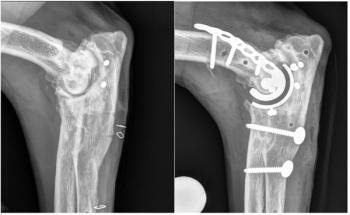
Mouse grimaces could be basis for observation of pain in other species
Montreal -- A new study of mouse grimaces could lead to more refined pain measurements for humans and animals.
Montreal
-- A new study of mouse grimaces could lead to more refined pain measurements for humans and animals.
Researchers at McGill University have developed the Mouse Grimace Scale to judge pain levels in mice based on their facial expressions. The research is helping scientists better manage the pain of lab animals but also could lead to better pain-management techniques for other species.
"The Mouse Grimace Scale provides a measurement system that will both accelerate the development of new analgesics for humans, but also eliminate unnecessary suffering of laboratory mice in biomedical research," says psychology professor Jeffrey Mogil, PhD. "There are also serious implications for the improvement of veterinary care more generally."
Mogil and his team analyzed images of mice before and during moderate pain from procedures like an injection of a dilute inflammatory substance. Researchers compared the pain to humans with a headache or swollen finger.
Five facial features were scored: orbital tightening (eye closing), nose bulges, cheek bulges, ear position and whisker position. Psychology professor Kenneth Craig and his graduate students at the University of British Columbia created the scale itself, with the help of facial-pain coding experts.
Continuing experiments will focus on whether the scale can apply to other species, whether analgesic drugs given to mice after surgical procedures work well at their commonly prescribed doses, and whether mice can respond to the facial pain cues of other mice.
Newsletter
From exam room tips to practice management insights, get trusted veterinary news delivered straight to your inbox—subscribe to dvm360.






